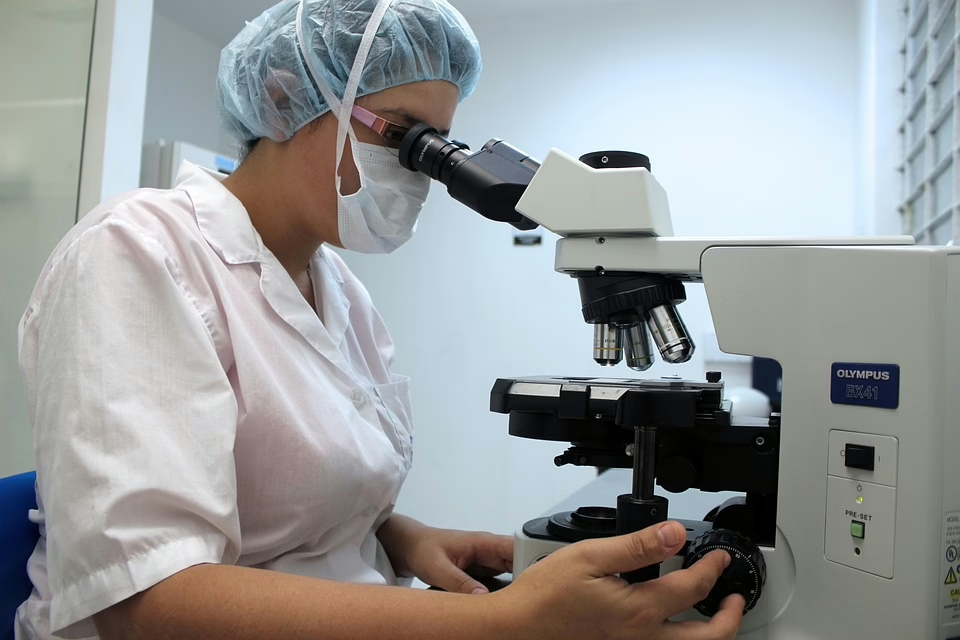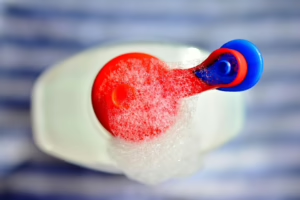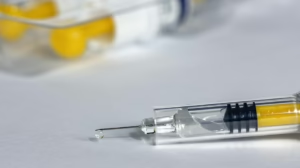Chemistry: The Invisible Science Shaping Our World
Abstract:
Chemistry, often perceived as a complex and abstract discipline confined to laboratories, is in reality the bedrock of our modern world. This article aims to illuminate the pervasive influence of chemistry across diverse facets of human existence, from the food we consume and the medicines that heal us to the materials that construct our homes and the technologies that define our future. By exploring specific examples and contextualizing chemical principles, we demonstrate the profound impact of this “invisible science” on our daily lives and its indispensable role in addressing global challenges.
Keywords: Chemistry, Materials Science, Medicine, Agriculture, Energy, Sustainability, Nanotechnology, Environmental Chemistry, Food Chemistry, Polymer Chemistry.
Introduction:
The world around us, in all its intricate beauty and complex functionality, is fundamentally a chemical tapestry woven from atoms and molecules. Chemistry, the study of matter and its properties, as well as how matter changes, is the science that unravels this tapestry and allows us to understand, manipulate, and ultimately, improve the world we inhabit. While the term “chemistry” might evoke images of bubbling beakers and arcane equations, its influence extends far beyond the laboratory, touching every aspect of our lives in profound and often unnoticed ways.
From the moment we wake up, brush our teeth with fluoride-enhanced toothpaste [1], and eat breakfast made from ingredients produced with the aid of fertilizers and pesticides [2], we are interacting with the products of chemical innovation. The clothes we wear are made from synthetic or treated natural fibers [3], our cars are powered by fuels derived from petroleum [4], and the electronic devices we use to communicate and access information rely on semiconductors and advanced materials [5]. Even the simple act of breathing involves a complex series of chemical reactions that sustain life [6].
This article seeks to demystify chemistry, highlighting its indispensable role in shaping our world and addressing the critical challenges facing humanity. We will explore its contributions to medicine, agriculture, materials science, energy production, environmental sustainability, and emerging fields like nanotechnology, showcasing how chemical principles are being harnessed to create a better future.
1. Chemistry and Medicine: A Lifeline for Health and Well-being:
The synergy between chemistry and medicine is perhaps one of the most impactful applications of the science. The development of pharmaceuticals, diagnostic tools, and biocompatible materials relies heavily on a deep understanding of chemical structures, reactions, and interactions within biological systems.
1.1 Pharmaceutical Development:
Drug discovery is a complex and multifaceted process that often begins with identifying a specific molecular target within the body that is associated with a disease [7]. Chemists then design and synthesize molecules that can interact with this target, either inhibiting its function (in the case of overactive pathways) or enhancing its activity (in the case of deficient pathways). This process often involves:
- Target Identification and Validation: Identifying a specific protein or enzyme involved in the disease process. For example, understanding the structure and function of the HIV protease was crucial for developing protease inhibitors to treat HIV/AIDS [8].
- Lead Discovery: Identifying a “lead compound” that shows promising activity against the target. This can involve screening large libraries of existing compounds or designing new molecules based on known active compounds. High-throughput screening (HTS) allows researchers to test thousands of compounds rapidly [9].
- Lead Optimization: Modifying the lead compound to improve its potency, selectivity, and pharmacokinetic properties (absorption, distribution, metabolism, and excretion – ADME). This often involves synthesizing dozens or even hundreds of analogs of the lead compound [10].
- Clinical Trials: Testing the drug in humans to assess its safety and efficacy. These trials are typically conducted in three phases, starting with small groups of healthy volunteers and progressing to larger groups of patients with the target disease [11].
Modern drug discovery increasingly relies on computational chemistry and bioinformatics to model molecular interactions, predict drug efficacy, and optimize drug design [12]. Techniques like molecular docking and molecular dynamics simulations allow researchers to virtually screen compounds and predict their binding affinity to the target protein, significantly accelerating the drug development process.
1.2 Diagnostic Tools and Imaging:
Chemistry also plays a crucial role in developing diagnostic tools that allow doctors to detect and monitor diseases. Techniques like:
- Immunoassays: Rely on the specific interaction between antibodies and antigens to detect the presence of specific molecules in biological samples, such as blood or urine [13]. ELISA (Enzyme-Linked Immunosorbent Assay) is a widely used immunoassay that can detect even trace amounts of a target molecule [14].
- Medical Imaging: Utilizes radioactive isotopes (e.g., Technetium-99m) or contrast agents (e.g., gadolinium compounds) to enhance the visibility of tissues and organs in X-rays, CT scans, and MRI [15]. Positron Emission Tomography (PET) utilizes radiolabeled molecules to visualize metabolic activity in the body, allowing for the early detection of cancer and neurological disorders [16].
- Biosensors: Combine biological recognition elements (e.g., enzymes, antibodies) with transducers to detect specific analytes in real-time. Glucose biosensors, widely used by people with diabetes, measure blood glucose levels using an enzyme-catalyzed reaction [17].
1.3 Biocompatible Materials:
The development of biocompatible materials has revolutionized medical implants and prosthetics. These materials are designed to be non-toxic and non-immunogenic, allowing them to be safely implanted into the body without causing adverse reactions. Examples include:
- Polymers: Used in sutures, drug delivery systems, and tissue engineering scaffolds. Polylactic acid (PLA) and polyglycolic acid (PGA) are biodegradable polymers used in sutures that dissolve over time, eliminating the need for removal [18].
- Metals: Titanium alloys are commonly used in orthopedic implants due to their high strength, corrosion resistance, and biocompatibility [19].
- Ceramics: Hydroxyapatite, a calcium phosphate ceramic, is similar to the mineral component of bone and is used to coat implants to promote bone ingrowth [20].
2. Chemistry and Agriculture: Feeding the World Sustainably:
Chemistry is essential for ensuring food security and sustainable agricultural practices. From fertilizers and pesticides to food processing and preservation, chemical principles are at the heart of modern agriculture.
2.1 Fertilizers and Crop Yields:
The Haber-Bosch process, a chemical reaction that converts atmospheric nitrogen into ammonia (NH3), is arguably one of the most significant inventions of the 20th century. Ammonia is a key ingredient in nitrogen fertilizers, which are essential for increasing crop yields [21]. While nitrogen is abundant in the atmosphere, plants cannot directly utilize it. The Haber-Bosch process provides a readily available form of nitrogen that plants can absorb through their roots, leading to significant increases in crop production.
However, the overuse of nitrogen fertilizers can have negative environmental consequences, including water pollution and greenhouse gas emissions [22]. Therefore, research is focused on developing more efficient fertilizers that release nitrogen slowly and are targeted to the specific needs of the plant. Controlled-release fertilizers, often coated with polymers, release nutrients gradually over time, reducing nutrient loss and minimizing environmental impact [23].
2.2 Pesticides and Pest Control:
Pesticides, including insecticides, herbicides, and fungicides, are used to protect crops from pests and diseases. These chemicals can significantly reduce crop losses and increase yields [24]. However, the use of pesticides can also have negative environmental and health effects. Some pesticides can persist in the environment, contaminate water sources, and harm non-target organisms [25].
Therefore, there is a growing emphasis on developing safer and more selective pesticides that target specific pests while minimizing harm to beneficial insects and other organisms. Biopesticides, derived from natural sources such as bacteria, fungi, and plants, are becoming increasingly popular as alternatives to synthetic pesticides [26]. Genetic engineering is also being used to develop crops that are resistant to pests, reducing the need for pesticide applications [27].
2.3 Food Processing and Preservation:
Chemistry plays a vital role in food processing and preservation, ensuring that food is safe, nutritious, and shelf-stable. Techniques like:
- Pasteurization: Heating milk or other liquids to kill harmful bacteria [28].
- Sterilization: Heating food to high temperatures to eliminate all microorganisms [29].
- Canning: Sealing food in airtight containers to prevent spoilage [30].
- Freezing: Lowering the temperature of food to slow down microbial growth and enzymatic activity [31].
- Dehydration: Removing water from food to prevent microbial growth [32].
Food additives, such as preservatives, antioxidants, and flavor enhancers, are also used to improve the quality and shelf life of food products [33]. These additives are carefully regulated to ensure their safety and effectiveness.
3. Chemistry and Materials Science: Building the Future:
Materials science, an interdisciplinary field that combines chemistry, physics, and engineering, focuses on the design, synthesis, and characterization of materials with specific properties. Chemistry provides the fundamental understanding of the structure and bonding of materials, allowing scientists to tailor their properties for specific applications.
3.1 Polymers: The Versatile Materials of Modern Life:
Polymers, large molecules composed of repeating structural units called monomers, are ubiquitous in modern life. From plastics and rubbers to fibers and adhesives, polymers are used in a wide range of applications [34]. Examples include:
- Polyethylene (PE): The most common plastic, used in packaging, films, and bottles [35].
- Polypropylene (PP): Used in containers, fibers, and automotive parts [36].
- Polyvinyl Chloride (PVC): Used in pipes, flooring, and siding [37].
- Polystyrene (PS): Used in packaging, insulation, and disposable cups [38].
- Nylon: A strong and durable fiber used in clothing, carpets, and ropes [39].
- Polyester: Used in clothing, bottles, and films [40].
The properties of polymers can be tailored by controlling the type of monomers used, the polymerization process, and the addition of additives. For example, the strength and flexibility of a polymer can be adjusted by varying the chain length and the degree of cross-linking. Additives, such as plasticizers, stabilizers, and flame retardants, can also be added to improve the properties of polymers [41].
3.2 Composites: Combining the Best of Both Worlds:
Composite materials are made by combining two or more different materials to create a new material with enhanced properties. For example, carbon fiber reinforced polymers (CFRPs) are used in aerospace, automotive, and sports equipment due to their high strength-to-weight ratio [42]. Concrete, a composite material made from cement, aggregate, and water, is the most widely used construction material in the world [43].
3.3 Semiconductors: The Foundation of Electronics:
Semiconductors, materials with electrical conductivity between that of a conductor and an insulator, are essential for modern electronics. Silicon is the most widely used semiconductor material [44]. The conductivity of semiconductors can be controlled by doping them with impurities, such as boron or phosphorus, allowing for the creation of transistors, diodes, and other electronic components [45]. The development of microchips, which contain billions of transistors, has revolutionized electronics and enabled the creation of computers, smartphones, and other digital devices.
3.4 Advanced Ceramics: High-Performance Materials:
Advanced ceramics are non-metallic inorganic materials with exceptional properties such as high strength, hardness, and resistance to heat and corrosion. They are used in a wide range of applications, including:
- Cutting tools: Ceramic cutting tools are harder and more durable than steel tools [46].
- Engine components: Ceramic engine components can withstand high temperatures and pressures [47].
- Biomedical implants: Ceramic implants are biocompatible and resistant to degradation [48].
- Electronics: Ceramic capacitors and insulators are used in electronic devices [49].
4. Chemistry and Energy: Powering the Planet Sustainably:
The production, storage, and utilization of energy are critical challenges facing humanity. Chemistry plays a central role in developing new energy technologies that are more efficient, sustainable, and environmentally friendly.
4.1 Fossil Fuels: A Chemical Legacy:
Fossil fuels, such as coal, oil, and natural gas, are formed from the remains of ancient plants and animals. These fuels are primarily composed of hydrocarbons, which release energy when burned in a process called combustion [50]. While fossil fuels have been the primary source of energy for centuries, their combustion releases greenhouse gases, contributing to climate change.
Chemistry is used to improve the efficiency of fossil fuel combustion and to develop technologies for capturing and storing carbon dioxide emissions [51]. Carbon capture and storage (CCS) involves capturing CO2 from power plants and other industrial sources and storing it underground [52].
4.2 Renewable Energy Sources:
Renewable energy sources, such as solar, wind, and hydropower, are becoming increasingly important as alternatives to fossil fuels. Chemistry plays a key role in developing technologies for harnessing and storing renewable energy.
- Solar Energy: Photovoltaic (PV) cells convert sunlight directly into electricity. Chemistry is used to develop new and more efficient PV materials, such as perovskites [53]. Solar thermal energy uses sunlight to heat water or other fluids, which can then be used to generate electricity or provide heat [54].
- Wind Energy: Wind turbines convert wind energy into electricity. Chemistry is used to develop lightweight and durable materials for wind turbine blades [55].
- Hydropower: Hydropower plants use the energy of flowing water to generate electricity. Chemistry is used to develop corrosion-resistant materials for hydropower turbines [56].
4.3 Energy Storage:
Energy storage is essential for overcoming the intermittency of renewable energy sources. Batteries, fuel cells, and other energy storage technologies rely on chemical reactions to store and release energy.
- Batteries: Store energy in the form of chemical potential energy. Lithium-ion batteries are widely used in portable electronic devices and electric vehicles [57]. Research is focused on developing new battery chemistries with higher energy density, longer lifespan, and improved safety [58].
- Fuel Cells: Convert chemical energy directly into electricity. Hydrogen fuel cells use hydrogen as fuel and produce water as the only byproduct [59]. Fuel cells are being developed for use in vehicles, stationary power generation, and portable electronics.
- Hydrogen Storage: Storing hydrogen is a significant challenge due to its low density. Chemical methods, such as metal hydrides and chemical hydrides, are being developed to store hydrogen more efficiently [60].
5. Chemistry and Environmental Sustainability: Protecting Our Planet:
Environmental chemistry is the study of chemical processes in the environment, including air, water, and soil. Chemistry is essential for understanding and addressing environmental problems such as pollution, climate change, and resource depletion.
5.1 Water Treatment and Purification:
Chemistry is used to treat and purify water for drinking, irrigation, and industrial use. Techniques like:
- Filtration: Removes suspended solids from water [61].
- Coagulation and Flocculation: Removes dissolved impurities by forming larger particles that can be filtered out [62].
- Disinfection: Kills harmful microorganisms using chlorine, ozone, or ultraviolet light [63].
- Reverse Osmosis: Removes dissolved salts and other impurities by forcing water through a semipermeable membrane [64].
5.2 Air Pollution Control:
Chemistry is used to control air pollution from industrial sources, vehicles, and other sources. Techniques like:
- Scrubbers: Remove pollutants from exhaust gases by using a liquid or solid absorbent [65].
- Catalytic Converters: Reduce emissions from vehicles by converting harmful pollutants into less harmful substances [66].
- Electrostatic Precipitators: Remove particulate matter from exhaust gases using an electric field [67].
5.3 Waste Management and Recycling:
Chemistry is used to manage and recycle waste materials. Techniques like:
- Incineration: Burning waste to reduce its volume and generate energy [68].
- Landfilling: Disposing of waste in engineered landfills that are designed to prevent groundwater contamination [69].
- Recycling: Processing waste materials into new products [70]. Chemical recycling involves breaking down polymers into their constituent monomers, which can then be used to produce new polymers [71].
5.4 Remediation of Contaminated Sites:
Chemistry is used to remediate contaminated sites, such as industrial sites and landfills. Techniques like:
- Soil Washing: Removing contaminants from soil by washing it with water or other solvents [72].
- Bioremediation: Using microorganisms to break down contaminants in soil and water [73].
- Phytoremediation: Using plants to remove contaminants from soil and water [74].
6. Chemistry and Nanotechnology: A World of Possibilities at the Atomic Scale:
Nanotechnology is the manipulation of matter on an atomic and molecular scale. Chemistry provides the tools and techniques for synthesizing and characterizing nanomaterials, which have unique properties due to their small size [75].
6.1 Nanomaterials:
Nanomaterials are materials with at least one dimension between 1 and 100 nanometers. Examples include:
- Nanoparticles: Tiny particles with unique optical, electrical, and magnetic properties [76]. Gold nanoparticles are used in drug delivery and diagnostics [77]. Silver nanoparticles are used as antibacterial agents [78].
- Nanotubes: Cylindrical structures made of carbon atoms [79]. Carbon nanotubes are extremely strong and conductive and are used in electronics, composites, and sensors [80].
- Nanorods: Rod-shaped structures with unique optical and electronic properties [81]. Quantum dots are semiconductor nanocrystals that emit light of different colors depending on their size [82].
- Graphene: A single layer of carbon atoms arranged in a honeycomb lattice [83]. Graphene is extremely strong, conductive, and flexible and is used in electronics, composites, and sensors [84].
6.2 Applications of Nanotechnology:
Nanotechnology has a wide range of potential applications, including:
- Medicine: Drug delivery, diagnostics, and tissue engineering [85].
- Electronics: Transistors, displays, and sensors [86].
- Energy: Solar cells, batteries, and fuel cells [87].
- Materials Science: Composites, coatings, and adhesives [88].
- Environmental Science: Water purification, air pollution control, and remediation [89].
Conclusion:
Chemistry is not merely a subject confined to textbooks and laboratories; it is the fundamental science that underpins our modern world. This article has explored the multifaceted influence of chemistry across diverse domains, highlighting its indispensable role in medicine, agriculture, materials science, energy production, environmental sustainability, and the burgeoning field of nanotechnology. From the development of life-saving drugs to the creation of sustainable energy solutions, chemistry is at the forefront of addressing the critical challenges facing humanity.
As we move forward, continued innovation in chemistry will be essential for creating a more sustainable, healthy, and prosperous future. By fostering a deeper understanding and appreciation for this “invisible science,” we can unlock its full potential to shape a better world for generations to come. Further research and development in areas such as green chemistry, sustainable materials, and advanced energy technologies are crucial for mitigating environmental impact and ensuring the long-term well-being of our planet. Investing in chemistry education and research is an investment in our future.
References:
[1] Fejerskov, O., Kidd, E. A., & Nyvad, B. (2003). Dental caries: the disease and its clinical management. Blackwell Munksgaard. [2] Tilman, D., Fargione, J., Lehman, C., & Polasky, S. (2001). How to feed the world well. Ecology Letters, 4(6), 499-505. [3] Kadolph, S. J., & Langford, A. L. (2001). Textiles. Pearson Education. [4] Speight, J. G. (2019). Handbook of petroleum product analysis. John Wiley & Sons. [5] Hummel, R. E. (2011). Electronic properties of materials. Springer Science & Business Media. [6] Lodish, H., Berk, A., Zipursky, S. L., Matsudaira, P., Baltimore, D., & Darnell, J. (2000). Molecular cell biology. WH Freeman. [7] Drewry, D. H., Wells, C. I., & Zuercher, W. J. (2010). Medicinal chemistry: a historical perspective. Journal of medicinal chemistry, 53(22), 7617-7638. [8] Debouck, C. (1999). HIV protease inhibitors. Trends in microbiology, 7(5), 190-199. [9] Macarron, R., Banks, M. N., Bojanic, D., Burns, D. J., Cirovic, D. A., Garyantes, T. K., … & Hertzberg, R. P. (2011). Impact of high-throughput screening in biomedical research. Nature Reviews Drug Discovery, 10(3), 188-195. [10] Wermuth, C. G. (2011). The practice of medicinal chemistry. Academic press. [11] Spilker, B. (1991). Guide to clinical trials. Raven press. [12] Anderson, A. C. (2003). The process of structure-based drug design. Chemistry & biology, 10(9), 787-797. [13] Wild, D. (2013). The immunoassay handbook. Newnes. [14] Crowther, J. R. (2015). ELISA: theory and practice. Humana press. [15] Caravan, P., Ellison, J. J., McMurry, T. J., & Lauffer, R. B. (1999). Gadolinium(III) chelates as MRI contrast agents: structure, dynamics, and relaxivity. Chemical reviews, 99(9), 2293-2352. [16] Phelps, M. E. (2000). Positron emission tomography provides molecular imaging of biological processes. Proceedings of the National Academy of Sciences, 97(16), 9226-9233. [17] Turner, A. P. F. (2013). Biosensors: sense and sensibility. Chemical Society Reviews, 42(8), 3184-3196. [18] Middleton, J. C., & Tipton, A. J. (2000). Synthetic biodegradable polymers as orthopedic devices. Biomaterials, 21(23), 2335-2346. [19] Niinomi, M. (2002). Mechanical biocompatibilities of metallic materials for biomedical applications. Materials Science and Engineering: A, 327(1-2), 261-273. [20] Hench, L. L. (1998). Bioceramics. Journal of the American Ceramic Society, 81(7), 1705-1728. [21] Erisman, J. W., Sutton, M. A., Galloway, J. N., Klimont, Z., & Winiwarter, W. (2008). How a century of ammonia synthesis changed the world. Nature Geoscience, 1(10), 636-639. [22] Galloway, J. N., Townsend, A. R., Erisman, J. W., Bleeker, A., Jordan Smith, M., Braun, B., … & Leach, A. (2008). Transformation of the nitrogen cycle: recent trends, questions, and potential solutions. Science, 320(5878), 889-892. [23] Shaviv, A. (2005). Controlled release fertilizers. Advances in agronomy, 84, 1-49. [24] Oerke, E. C. (2006). Crop losses to pests. The Journal of Agricultural Science, 144(1), 31-43. [25] Aktar, W., Sengupta, D., & Chowdhury, A. (2009). Impact of pesticides use in agriculture: their benefits and hazards. Interdisciplinary toxicology, 2(1), 1-12. [26] Chandler, D., Bailey, A. S., Tatchell, G. M., Davidson, G., Greaves, J., & Grant, W. P. (2011). The development and implementation of biorational control strategies for invertebrate pests. Philosophical Transactions of the Royal Society B: Biological Sciences, 366(1573), 1863-1876. [27] James, C. (2018). Global status of commercialized biotech/GM crops: 2018. ISAAA Brief, 54. [28] Hui, Y. H. (2006). Handbook of food science, technology, and engineering. CRC press. [29] Fellows, P. J. (2017). Food processing technology: principles and practice. Woodhead Publishing. [30] Lund, D. B. (1975). Heat processing. In Principles of food science (pp. 149-203). Springer, Boston, MA. [31] Rahman, M. S. (2007). Handbook of food preservation. CRC press. [32] Jayaraman, K. S., & Das Gupta, D. K. (1992). Dehydration of fruits and vegetables—recent developments in principles and techniques. Drying technology, 10(1), 1-50. [33] Branen, A. L., Davidson, P. M., Salminen, S., & Thorngate, J. H. (2001). Food additives. CRC press. [34] Billmeyer, F. W. (1984). Textbook of polymer science. John Wiley & Sons. [35] Peacock, A. J. (2000). Handbook of polyethylene: structures, properties, and applications. Marcel Dekker. [36] Moore Jr, E. P. (1996). Polypropylene handbook: polymerization, characterization, properties, applications. Hanser. [37] Nass, L. I., & The Encyclopedia of PVC. (1986). Marcel Dekker. [38] Brydson, J. A. (1999). Plastics materials. Butterworth-Heinemann. [39] Kohan, M. I. (1995). Nylon plastics handbook. Hanser. [40] Goodman, I. (1998). Polyesters and polyamides. Macmillan. [41] Pritchard, G. (1998). Plastics Additives: An A-Z reference. Springer Science & Business Media. [42] Mallick, P. K. (2007). Fiber-reinforced composites: materials, manufacturing, and design. CRC press. [43] Mehta, P. K., & Monteiro, P. J. M. (2014). Concrete: microstructure, properties, and materials. McGraw Hill Professional. [44] Sze, S. M., & Ng, K. K. (2006). Physics of semiconductor devices. John Wiley & Sons. [45] Streetman, B. G., & Banerjee, S. K. (2016). Solid state electronic devices. Pearson. [46] Trent, E. M., & Wright, P. K. (2000). Metal cutting. Butterworth-Heinemann. [47] Richerson, D. W. (2018). Modern ceramic engineering: properties, processing, and use in design. CRC press. [48] Vallet-Regí, M., & Arcos, D. (2005). Calcium phosphate-based biomaterials and their applications as DDS: a review. Advanced drug delivery reviews, 57(7), 1093-1114. [49] Buchanan, R. C. (1991). Ceramic materials for electronics: processing, properties and applications. CRC press. [50] Speight, J. G. (2019). Handbook of fossil fuels: origins, composition, properties and uses. Gulf Professional Publishing. [51] Metz, B., Davidson, O., De Coninck, H., Loos, M., & Meyer, L. (2005). IPCC special report on carbon dioxide capture and storage. Cambridge University Press. [52] Herzog, H. J. (2001). What future for carbon capture and storage?. Environmental science & technology, 35(7), 148A-153A. [53] Snaith, H. J. (2013). Perovskites: the emergence of a new era for low-cost, high-efficiency solar cells. The Journal of Physical Chemistry Letters, 4(21), 3623-3630. [54] Kalogirou, S. A. (2013). Solar thermal energy for domestic and industrial applications. Woodhead Publishing. [55] Manwell, J. F., McGowan, J. G., & Rogers, A. L. (2019). Wind energy explained: theory, design and application. John Wiley & Sons. [56] Lal, J. (2015). Hydraulic machines. Metropolitan Book Co. Pvt. Ltd. [57] Tarascon, J. M., & Armand, M. (2001). Issues and challenges facing rechargeable lithium batteries. Nature, 414(6861), 359-367. [58] Goodenough, J. B., & Park, K. S. (2013). The Li-ion rechargeable battery: a perspective. Journal of the American Chemical Society, 135(4), 1167-1176. [59] O’Hayre, R., Cha, S. W., Colella, W., & Prinz, F. B. (2016). Fuel cell fundamentals. John Wiley & Sons. [60] Züttel, A. (2003). Materials for hydrogen storage. Materials today, 6(9), 24-33. [61] Degrémont, G. (2007). Water treatment handbook. Lavoisier. [62] Letterman, R. D. (Ed.). (1999). Water quality and treatment: a handbook of community water supplies. American Water Works Association. [63] White, G. C. (1999). Handbook of chlorination and alternative disinfectants. John Wiley & Sons. [64] Fritzmann, C., Löwenberg, L., Wintgens, T., & Melin, T. (2007). Membrane filtration for water and wastewater treatment. Chemical Engineering Journal, 123(1), 1-21. [65] Cooper, C. D., & Alley, F. C. (2010). Air pollution control: a design approach. Waveland Press. [66] Heck, R. M., Farrauto, R. J., & Gulati, S. T. (2016). Catalytic air pollution control: commercial technology. John Wiley & Sons. [67] Parker, K. R. (1997). Applied electrostatic precipitation. Springer Science & Business Media. [68] McDougall, F. R., White, P. R., Franke, M., & Hindle, P. (2001). Integrated solid waste management: a life cycle inventory. Blackwell Science. [69] Rhyner, C. R., Schwartz, L. J., Wenger, R. B., & Kohrell, M. G. (1995). Waste management and resource recovery. CRC press. [70] Christensen, T. H. (Ed.). (2011). Solid waste technology and management. John Wiley & Sons. [71] Scheirs, J. (2006). Polymer recycling: science, technology and applications. John Wiley & Sons. [72] Dermont, G., Bergeron, M., Mercier, G., & Richer-Laflèche, M. (2008). Soil washing for the remediation of metal-contaminated soils: a review. Journal of hazardous materials, 152(1), 1-31. [73] Vidali, M. (2001). Bioremediation. Pure and applied chemistry, 73(7), 1163-1172. [74] Salt, D. E., Smith, R. D., & Raskin, I. (1998). Phytoremediation. Annual review of plant physiology and plant molecular biology, 49(1), 643-668. [75] Poole Jr, C. P., & Owens, F. J. (2003). Introduction to nanotechnology. John Wiley & Sons. [76] Roco, M. C., Mirkin, C. A., & Hersam, M. C. (2011). Nanotechnology research directions for societal needs in 2020: summary of international study. Journal of nan

























Add Comment